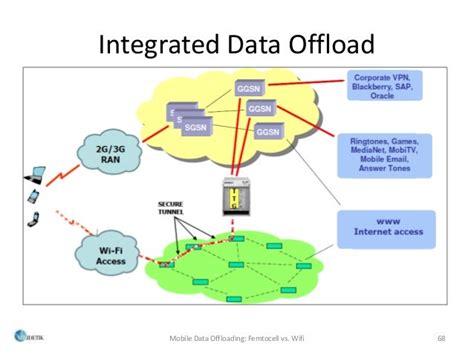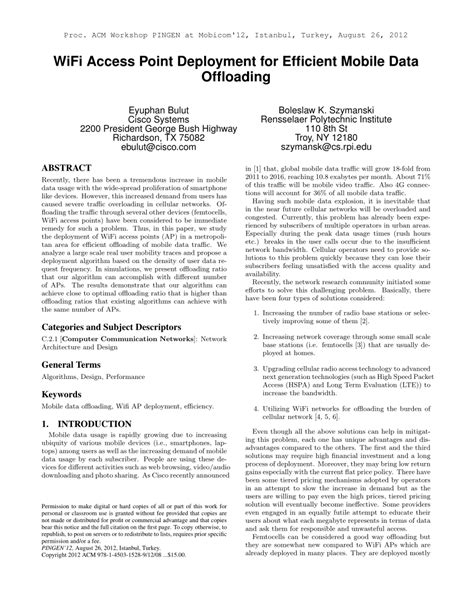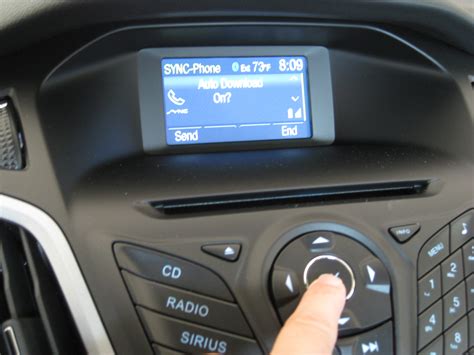Mobile Data Offloading Solutions

The rapid proliferation of mobile devices and the subsequent explosion in mobile data traffic have led to significant challenges for mobile network operators. One of the primary concerns is the strain on their networks, which can result in decreased service quality, increased latency, and higher operational costs. To mitigate these issues, mobile data offloading solutions have emerged as a vital strategy. Mobile data offloading involves transferring data traffic from traditional cellular networks to alternative networks, such as Wi-Fi or small cell networks, to alleviate congestion and improve network efficiency.
Mobile data offloading solutions are designed to provide relief to cellular networks by leveraging the capacity of complementary networks. This approach not only enhances the user experience by offering faster data speeds and lower latency but also enables mobile network operators to optimize their network resources and reduce capital expenditures. The implementation of mobile data offloading solutions requires a deep understanding of network architecture, traffic patterns, and user behavior, as well as the integration of advanced technologies such as network function virtualization (NFV) and software-defined networking (SDN).
Key Points
- Mobile data offloading solutions are crucial for alleviating cellular network congestion and improving service quality.
- Wi-Fi and small cell networks are primary alternatives for offloading data traffic.
- Mobile data offloading enhances user experience through faster data speeds and lower latency.
- Network function virtualization (NFV) and software-defined networking (SDN) play key roles in the implementation of mobile data offloading solutions.
- Understanding network architecture, traffic patterns, and user behavior is essential for effective mobile data offloading.
Types of Mobile Data Offloading Solutions

There are several types of mobile data offloading solutions, each with its unique characteristics and applications. Wi-Fi offloading is one of the most common methods, where data traffic is transferred from cellular networks to Wi-Fi networks. This can be particularly effective in areas with high foot traffic or where users are likely to be stationary for extended periods, such as coffee shops, airports, or shopping malls. Small cell networks, including femtocells and picocells, also offer offloading capabilities by providing localized coverage and capacity.
Another approach is the use of heterogeneous networks (HetNets), which combine different types of access networks, including cellular, Wi-Fi, and small cells, to provide seamless and efficient data services. HetNets are particularly useful in urban areas where the density of users and the variety of network environments can create complex challenges for data offloading. Additionally, mobile network operators are exploring the potential of fifth-generation (5G) networks for advanced data offloading capabilities, leveraging the higher bandwidth and lower latency of 5G to support a wide range of applications and services.
Technological Advancements in Mobile Data Offloading
Technological advancements play a critical role in the development and implementation of mobile data offloading solutions. NFV and SDN, for instance, enable the virtualization of network functions and the creation of software-defined networks, respectively. These technologies allow for greater flexibility, scalability, and programmability in network operations, making it easier to manage and optimize data offloading processes. Moreover, the integration of artificial intelligence (AI) and machine learning (ML) algorithms into mobile data offloading solutions can help predict traffic patterns, detect network congestion, and make real-time decisions about data routing and offloading.
| Technology | Description |
|---|---|
| NFV | Enables the virtualization of network functions to improve network flexibility and scalability. |
| SDN | Allows for the creation of software-defined networks to enhance network programmability and control. |
| AI/ML | Facilitates predictive analytics and real-time decision-making for optimized data offloading and network management. |

Benefits and Challenges of Mobile Data Offloading Solutions

Mobile data offloading solutions offer numerous benefits, including reduced network congestion, improved data speeds, and enhanced user experience. By offloading data traffic to alternative networks, mobile network operators can also reduce their capital and operational expenditures, as they do not need to continually upgrade their cellular infrastructure to meet growing demand. Furthermore, mobile data offloading can help operators manage their spectrum more efficiently, allocating it to areas and applications where it is most needed.
However, there are also challenges associated with implementing mobile data offloading solutions. One of the primary concerns is ensuring seamless handovers between different networks, which requires sophisticated network management and orchestration capabilities. Additionally, mobile network operators must address issues related to security, quality of service (QoS), and user authentication when offloading data to non-cellular networks. The integration of different technologies and networks also poses technical challenges, necessitating a high degree of interoperability and standardization.
Future Directions and Implications
The future of mobile data offloading solutions is closely tied to the evolution of 5G networks and the Internet of Things (IoT). As 5G networks become more widespread, they are expected to support a vast array of applications and services that require ultra-low latency, high bandwidth, and massive connectivity. Mobile data offloading will play a critical role in enabling these services by efficiently managing data traffic and ensuring that network resources are allocated optimally. The IoT, with its billions of connected devices, will also rely on mobile data offloading solutions to manage the vast amounts of data generated by these devices and to provide the necessary connectivity and bandwidth.
In conclusion, mobile data offloading solutions are a vital component of modern mobile networking, offering a range of benefits from reduced congestion and improved user experience to cost savings and enhanced network efficiency. As mobile technology continues to evolve, the importance of these solutions will only grow, driven by the need for seamless, efficient, and high-quality data services. Mobile network operators, technology vendors, and regulatory bodies must work together to address the challenges associated with mobile data offloading and to ensure that these solutions are deployed effectively and efficiently.
What is mobile data offloading, and how does it work?
+Mobile data offloading involves transferring data traffic from traditional cellular networks to alternative networks, such as Wi-Fi or small cell networks, to alleviate congestion and improve network efficiency.
What are the benefits of mobile data offloading solutions?
+The benefits include reduced network congestion, improved data speeds, enhanced user experience, and cost savings for mobile network operators.
What challenges are associated with implementing mobile data offloading solutions?
+Challenges include ensuring seamless handovers between networks, addressing security and QoS issues, and integrating different technologies and networks.
How will mobile data offloading solutions evolve in the future?
+The future of mobile data offloading is closely tied to the evolution of 5G networks and the IoT, with a focus on supporting ultra-low latency, high bandwidth, and massive connectivity applications and services.
What role will NFV and SDN play in the future of mobile data offloading?
+NFV and SDN will enable the virtualization of network functions and the creation of software-defined networks, respectively, allowing for greater flexibility, scalability, and programmability in network operations and optimization of data offloading processes.



